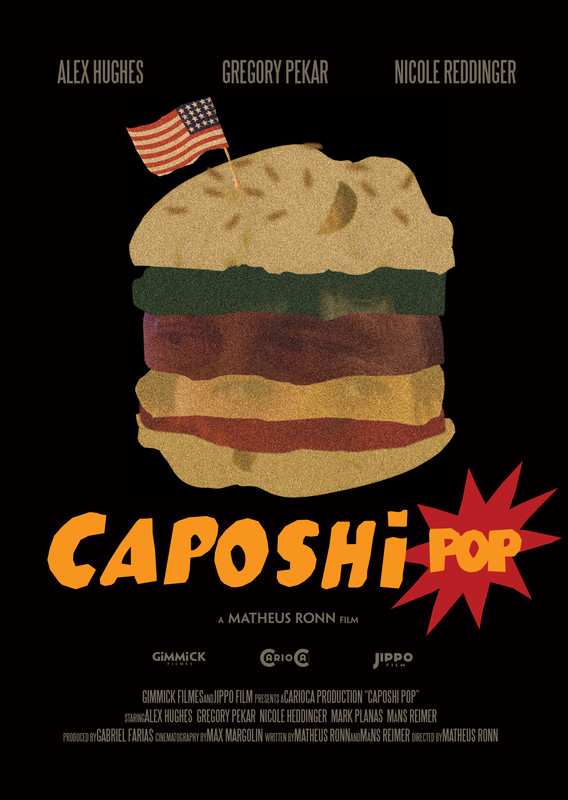 While Caposhi Pop may be a little bit lacking in originality (it’s what would happen if all of Spike Lee’s Inside Man was wedged inside the diner scene from Pulp Fiction), it nevertheless has an eye-catching, frenetic energy to it that propels it above an average crime film. The film’s inherent charm lies in its ability to successfully pack a host of different styles and modes of filmmaking–including animated credits, reverse imagery, voice-over, flashbacks, flash forwards, and point of view camerawork— and yet make it coherent and enjoyable.
While Caposhi Pop may be a little bit lacking in originality (it’s what would happen if all of Spike Lee’s Inside Man was wedged inside the diner scene from Pulp Fiction), it nevertheless has an eye-catching, frenetic energy to it that propels it above an average crime film. The film’s inherent charm lies in its ability to successfully pack a host of different styles and modes of filmmaking–including animated credits, reverse imagery, voice-over, flashbacks, flash forwards, and point of view camerawork— and yet make it coherent and enjoyable.
Caposhi Pop opens with the robbery of a small, colorful diner, as seen from the point of view of someone in the back booth. Two masked assailants blow through the front entrance, wave their guns around, and insist that all the hostages get on the floor. After the film’s animated credits, the film flashes forward to the robbers eating diner food with police sirens blaring in the background, discussing how one designs a successful heist (Point one: don’t get caught. Point two: don’t get shot). We learn that this whole crime is, in fact, a cover-up for another, serious theft, and the point of the whole crime (and the film) is to extend the time before the cops arrive. Caposhi Pop vacillates back and forth between the trajectory of the crime and the dinner scene before events take an unexpected turn for the criminals.
Again, the film’s appeal lies in its ability to be fast-paced, fun, and entirely unserious, and the frenetic camera and wild shifts between filmmaking techniques only serve to underscore the film’s sense of fun. In no way is this a serious crime film, and as such, the violence and morals are appropriately garish. Freddy, the group’s leader, who is hilariously self-congratulatory and snide to his fellow conspirators, highlights the movie’s smarminess. However, any attempt at serious characterization fall’s flat, such as the moment in which the film attempts to characterize the other conspirator’s (Suzy’s) need for violence as a result of familial trauma. Clearly, Suzy loves to beat people with a mallet. The movie loves that she loves it; there’s no reason required.
That’s one of few moments that fall flat, though, in what is a generally coherent good time. The setting and color palette mimic the energy of the film: the reds and oranges of the animated credits dovetail with the garish, late-night diner colors. The effect is lively and invigorating without being entirely overwhelming. The movement of the camera likewise emphasizes the film’s screwy magnetism. The point of view work, reverse imagery, and slow motion are hyper-stylized but nonetheless appropriate for a film that has no expectations that crime, violence, or death should be taken seriously. Although this is a bit derivative, harkening back to the indie film movement days of the early 1990s, Caposhi Pop returns to these techniques with enough energy and delightedness that it makes it a pleasure to revisit such modes of filmmaking.
